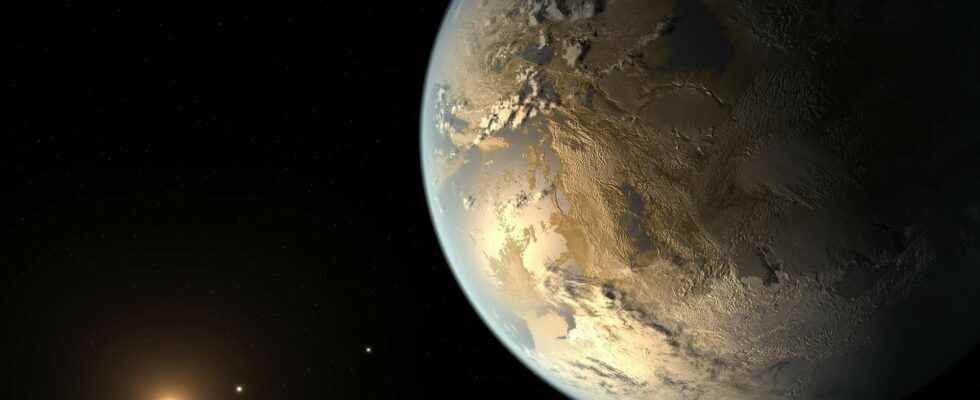You will also be interested
[EN VIDÉO] Proxima b, the closest exoplanet to us! It is the only known planet to date orbiting Proxima Centauri, a star located in Alpha Centauri. This system is the closest to our Solar System, “only” 4,244 light-years from us.
This July 29, 2022, the famous site ofEncyclopedia of extrasolar planets mentions that the noosphere discovered 5.121 exoplanets since 51 Pegasi B, a discovery then made thanks to the Nobel Prizes in Physics Michel Mayor and Didier Queloz. Futura recently interviewed the creator of this site now world famous, theastronomer French Jean Schneider.
The knowledge of the existence of these exoplanets is an extraordinary advance in the History ofHomo sapiens but it still remains very partial because, for the most part, we only have estimates of masses and distances for these exoplanets, and a few rare spectra giving a embryo composition ofatmospheres to shorten it.
Obviously, we would like to at least have images of the details of these exoplanets, especially if they are exoterres potential. Ideally, we would even like to discover biosignatures and even technosignatures there.
The Nasa recently allocated new funds for the study of a spectacular project that could be carried out during the XXIe century for this purpose. The project itself is just in the cards and there is no question of physically undertaking it yet. This is a avatar of a concept proposed in 1979 by a Stanford University researcher, VR Eshleman: the lens gravitational solar.
In concrete terms, this means taking advantage of the fact that the field of gravitation of a celestial body deflects the light rays like a lens and therefore provides a magnification factor to form images. By placing yourself at a certain distance from the Sun, it is therefore possible to use it as gravitational lens to form the image of an exoplanet with a resolution record, as if we had a giant telescope far larger than those that can be built on Earth due to gravity deforming a mirror under its own weight.
Researchers like Slava G. Turyshev from Jet Propulsion Laboratory as well as Alexander Madurowicz and Bruce Macintosh from Stanford have therefore published on arXiv and in an article by The Astrophysical Journal for a few years already where they have been developing the concept.
A swarm of telescopes powered by solar sails
Currently, the general ideas on this subject are as follows:
By using directly, as with a telescope, a gravitational lens to form images of an exoplanet, we would however have rather vague results. The best is to have several instruments flying in a swarm and each observing a portion of the equivalent of a ring ofEinstein for the solar lens, i.e. a deformation of the image of the exoplanet forming a ring, as in the case of certain observations of quasars using a strong gravitational lens produced by a cluster of galaxies.
Concretely, this would require sending this swarm to distances between 548 and 900 times the distance from the Earth to the Sun, which would make it possible to form images of exoplanets up to about 100 light years of the Sun. No problem in theory therefore to observe the exoplanets around Proxima Centauri and Trappist 1for example.
With a single instrument whose mirror would be about one meter in diameter, we could obtain images of the surface of these exoplanets with a resolution of the order of a few tens of kilometers.
However, there are several difficulties with this idea. With current propulsion technology, it would take about a century to send the instruments a good distance. We could at best shorten the period to around 25-30 years, which is reasonable for the duration life of a person involved in this project, using solar sails. The technology of these sails is not yet perfected, although reasonably close at hand.
Explanations on the latest concept of a mission to exploit the solar gravitational lens to image exoplanets. © The Aerospace Corporation
Interested in what you just read?
